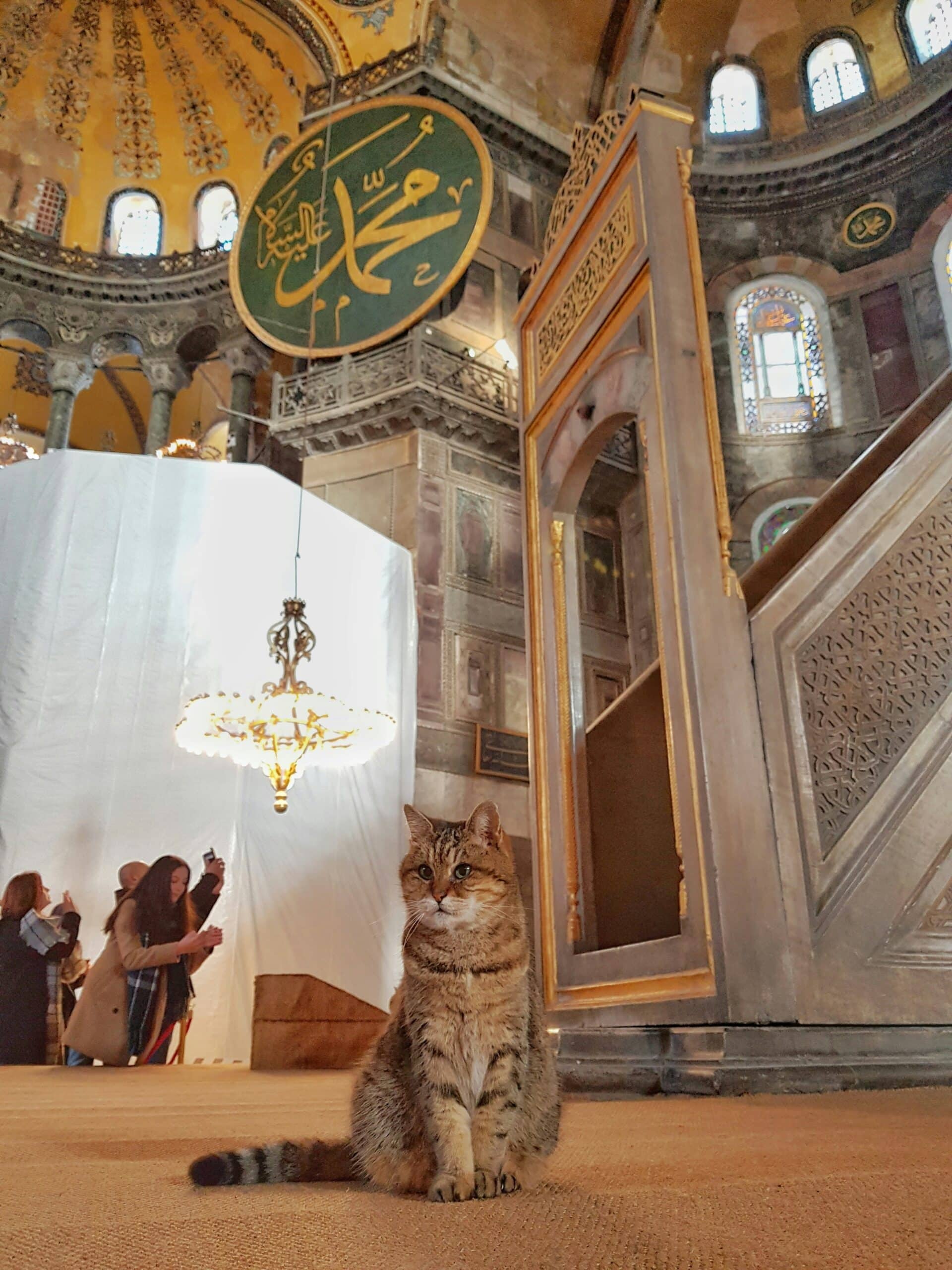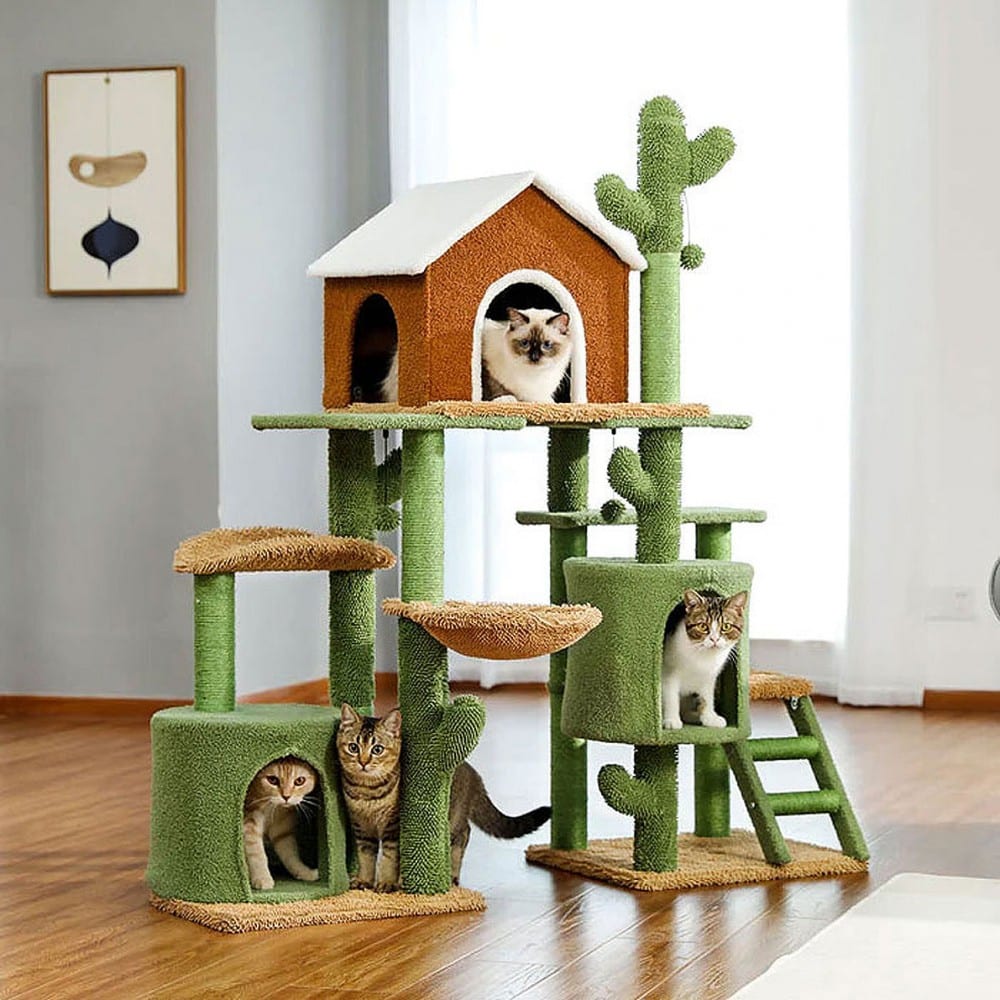The City of Cats – Catstanbul
Catstanbul is the unofficial nickname of Istanbul. Hundreds of thousands of cats roam freely through Istanbul’s streets and alleys. They’ve lived like this for five thousand years. Here, visitors delight in spotting many adorable cats and kittens cozily curled up in doorways, window sills, and even flower pots! The city’s human residents appreciate their city’s felines. You’ll see bowls of fresh water and food left in front of homes for the cats. They even make sure the city’s many felines have warm, sheltered spots so they can live outside comfortably. It truly is a city of cats.
The City of Cats – A unique life
We can consider Istanbul cats as a specific group of cats; they are not stray cats, feral, or house cats. Istanbul cats are free roaming domesticated cats. They do not belong to one specific person or home. The city’s many citizens take care of the cats. Though they may have special bonds with certain cats, they belong to no one. Istanbul and her citizens are the cats’ guardians.

Photo by Anna Tsukanova on Unsplash
The City of Cats – An ancient history
When Ottomans settled the city, they worshiped cats for hunting mice, rats, and other human pests. They appreciated cats’ instinctive cleanliness. Cats like to keep their paws and fur immaculately clean and because they hunt pests, they reduce the spread of certain diseases and lice, keeping the environment clean for humans. The Ottomans also welcomed cats because they kept rats, mice, and other scavengers from eating and spoiling their food stores. The Ottomans recognized the many benefits of supporting and protecting the local cats. Today, we still gain these same benefits from sharing our cities with felines.
Read:
- The 20 Best Gifts for Cats
- 15 Cactus Cat Scratchers & Cat Trees for Southwestern Flair
- 12 Best Cat Enrichment Toys in 2024 – Reviews & Top Picks
- Best 12 Toys Your Bengal Cat Will Love!
Ottoman Legacy
Ottomans made the city prosperous in wealth, arts, and scholarly pursuits. They transformed the ancient city of Constantinople into the world’s renowned capital, Istanbul. Mehmed II, the Conqueror, took Constantinople on 29 May 1453. Ambitious Ottomans began remaking the city to reflect their culture and religion. They protected stray animals as an act of humility and mercy. Stray cats and dogs were allowed to roam and the Ottomans fed and appreciated them. Cats were regarded with greater respect than dogs because their prophet Muhammad loved cats. He believed they were noble creatures worthy of care and protection.

Photo by Büşra Salkım on Unsplash
Islamic Legends about cats -Muezza
Muslims believe cats are holy clean creatures. The prophet Muhammad was a true cat lover. There is a legend about Muhammad and his favorite cat, Muezza. Muhammad would often deliver sermons from his home and Muezza would sit contently on his lap. Once, as Muhammad woke to prepare himself for parayer, Muezza slept soundly on his sleeve preventing him from going to prayer without waking her. Muhammad took a pair of scissors and cut away the piece of his sleeve that Muezza slept on allowing the cat to continue sleeping undisturbed as Muhammad went to prayers.
Other legends tell how Muhammad stroked Muezza’s head three times thus granting her seven lives and the ability to always land on her feet and how a cat once saved Muhammad from a poisonous snake. Perhaps this cat was sent by heaven.
The Kuran is clear on the treatment of animals stating that they exist for the benefit of man and should be treated with compassion and kindness. It also commands the followers of Islam to help animals and need. The Kuran explains this is because Allah gifted people with reason and intelligence and so they should show justice, care, and compassion for animals. Allah loves animals and gifted them with instinct to benefit us. The importance of treating animals with kindness is stressed by a chilling story Muhammad told his follwers. He told them of a woman who intentionally starved a cat to death. She was sent to hell for eternity. This is a serious warning we should all heed.
Read:
- The 20 Best Gifts for Cats
- 15 Cactus Cat Scratchers & Cat Trees for Southwestern Flair
- 12 Best Cat Enrichment Toys in 2024 – Reviews & Top Picks
- Best 12 Toys Your Bengal Cat Will Love!
Cats save history
Not just the Ottomans or Muhammad but many ancient peoples and personages have valued felines. Cats are instinctively clean animals that hunt pests that carry disease, eat our food stores, and destroy precious libraries. They are loving companions. Arabic peoples have always welcomed cats into their social and sacred buildings viewing them as beneficent creatures. Without cats, many histories and ancient knowledge could have been lost.
Cats save industry
It would be very unfair to connect the love for cats only with Istanbul, as many other cultures admire cats even more. Japan respects cats for their silence, a trait of nobility. Around 500 A.D, before Istanbul was established, Buddhist priests welcomed cats into their temples to guard their manuscripts and documents from mice and rats. The Japanese valued their cats as much as the books they protected so much that only rich nobles could afford to buy a cat. Around the beginning of the 17th century, the silkworm industry was almost extinguished because of pests. The Japanese government ordered the ruling class of nobles to release their cats and save the silk industry.

Photo by Kirill Verpikov on Unsplash
Cats serve coffee?
In Japan today, people aren’t allowed to keep cats in apartments. So many public cafe bars decided to take the cats in as permanent residents. Customers loved having the cats in the cafes and it became a global phenomenon. New York City opened the doors to its first cat cafes in 2014 – Meow Parlour and Lady Dinah’s Cat Emporium. Japan even has eleven islands where cats roam freely and villagers nurse them and feed them daily.
Cats around the globe:
- China has around 53 million cats. The Chinese government considers stray cats unhygienic. Media coverage revealed the government eliminating thousands of homeless cats from the streets of Beijing before the Olympics.
- In the USA, the cat is the number one favorite pet. One in three US households is home to two cats on average. About 76.5 million cats live in the US. Most are loved pets but stray cats are cared for also because cats are considered beneficial by Americans.
- Ukraine has a cat population of around 7.5 million cats. Most are primarily stray.
- Italy has around 9.5 million cats. Italians love their stray cats and give them food and fresh water.
- Russia has around 13 million cats. Russian people are warm-hearted toward animals and generally adopt strays for pets.
- Brazil, France, the U.K., and Germany also holds a positive attitude towards cats.

Photo by Vladimir Sokolov on Unsplash
The City of Cats- Istanbul
Many different cultures and countries celebrate cats but there is only one true City of Cats, Istanbul. It is the cat’s original city. There lives the city cat, not a stray, feral, or house cat but a feline citizen of the city! If you ever visit Istanbul, you must follow the unwritten rule: take care of the cat if you have the opportunity. Treat cats as you treat yourself and other human beings, with compassion and understanding. Help them ever and hurt them never.

Photo by Süheyl Burak on Unsplash







